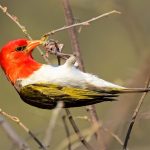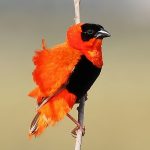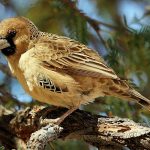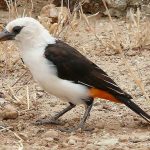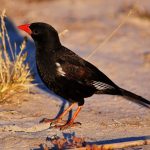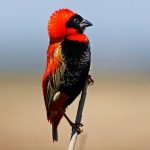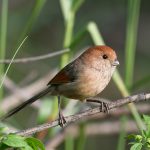Jackson's widowbird
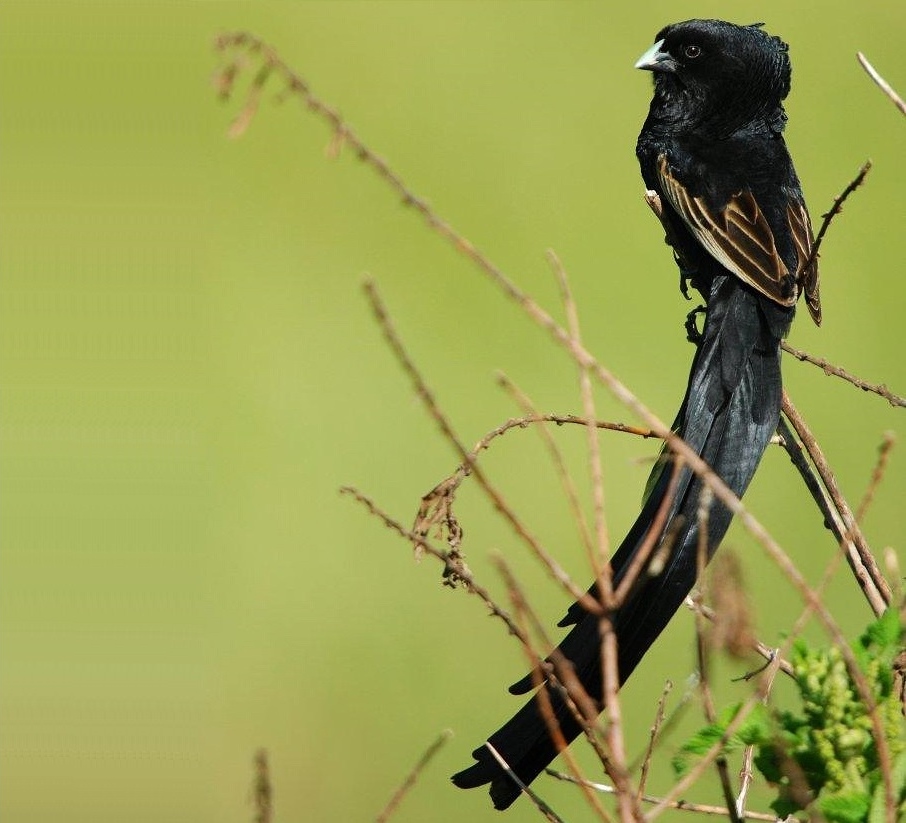
 |
| Photo by Szymon Beuch (Forum Przyroda) |
Common name:
Jackson’s widowbird (en); bispo-de-Jackson (pt); euplecte de Jackson (fr); obispo de Jackson (es); leierschwanzwida (de)
Taxonomy:
Order Passeriformes
Family Ploceidae
Range:
These birds are found in central and western Kenya and north-eastern Tanzania.
Size:
The females are 14 cm long but the males reach 30 cm due to the large tail they develop with their breeding plumage. Males are also 40% heavier than females.
Habitat:
The Jackson’s widowbird is found high-altitude grasslands and arable land. They are present at altitudes of 1.500-3.000 m.
Diet:
They feed on grass seeds, particularly those of Themeda triandra and Panicum, as well as termite alates.
Breeding:
Jackson’s widowbirds are polygynous and can breed all year round. The males perform a peculiar dance to attract females, matting with several females and having no further part in the breeding process. The nest is a domed ball of woven grass with a side entrance, lined with grass seed-heads, usually placed within 10 cm of the ground in a tuft of grass, with living grass bent down over it to form a bower. There the female lays 2-4 eggs which she incubates for 12-13 days. The chicks are fed by the female and fledge 17 days after hatching.
Conservation:
IUCN status – NT (Near-Threatened)
This species has a relatively large breeding range and is described as locally common.
The population is suspected to be in decline owing to ongoing habitat destruction and fragmentation, as a result of intensified agricultural development and livestock production. Fires, started by pastoralists to control ticks, are common in the dry season, and temporarily destroy most suitable habitat.



